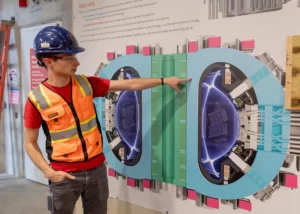
**Watch this four-legged robot adapt to tricky situations like an animal**
In a remarkable demonstration of innovative robotics engineering, researchers at the University of Leeds have unveiled a quadruped robot capable of navigating complex environments with unprecedented agility and resilience. This cutting-edge machine has been designed to mimic the bio-mechanics of four-legged animals, allowing it to recover from falls, maintain stability on uneven ground, and adapt to unpredictable situations.
The robot’s remarkable abilities were showcased in a recent video demonstration, which highlights its capacity to navigate obstacles and adjust to changing circumstances without relying on extra-perceptive sensors. The technology has significant implications for various industries, including search and rescue, environmental monitoring, and disaster relief.
The project’s researchers have successfully developed an innovative framework that enables the quadruped robot to mimic the natural movements of animals, such as adjusting its gait and center of mass in response to changing terrain or unexpected disturbances. This remarkable adaptability is achieved through a sophisticated control system that combines machine learning with advanced robotic engineering principles.
The potential applications for this technology are vast and varied. For instance, the robot could be used to explore hazardous environments, like disaster zones or polluted areas, where human presence would be too dangerous. The device’s unique ability to recover from falls also means it could potentially be used in search and rescue missions, allowing it to navigate treacherous terrain and adapt to unexpected situations.
Furthermore, the research has far-reaching implications for fields such as environmental monitoring and conservation. By deploying this robot in remote or hard-to-reach areas, scientists could gather critical data on ecosystems and wildlife without putting human lives at risk.
The video demonstration showcases the robot’s impressive capabilities, including its ability to adapt to changing terrain and recover from a simulated fall. The footage highlights the device’s remarkable stability and agility, allowing it to quickly regain balance and continue navigating the environment.
This breakthrough in robotics has significant potential to transform various industries and fields. The research serves as an exemplary model of innovation in action, demonstrating the power of interdisciplinary collaboration between academia and industry experts.
**Read more:**
Source: techcrunch.com


